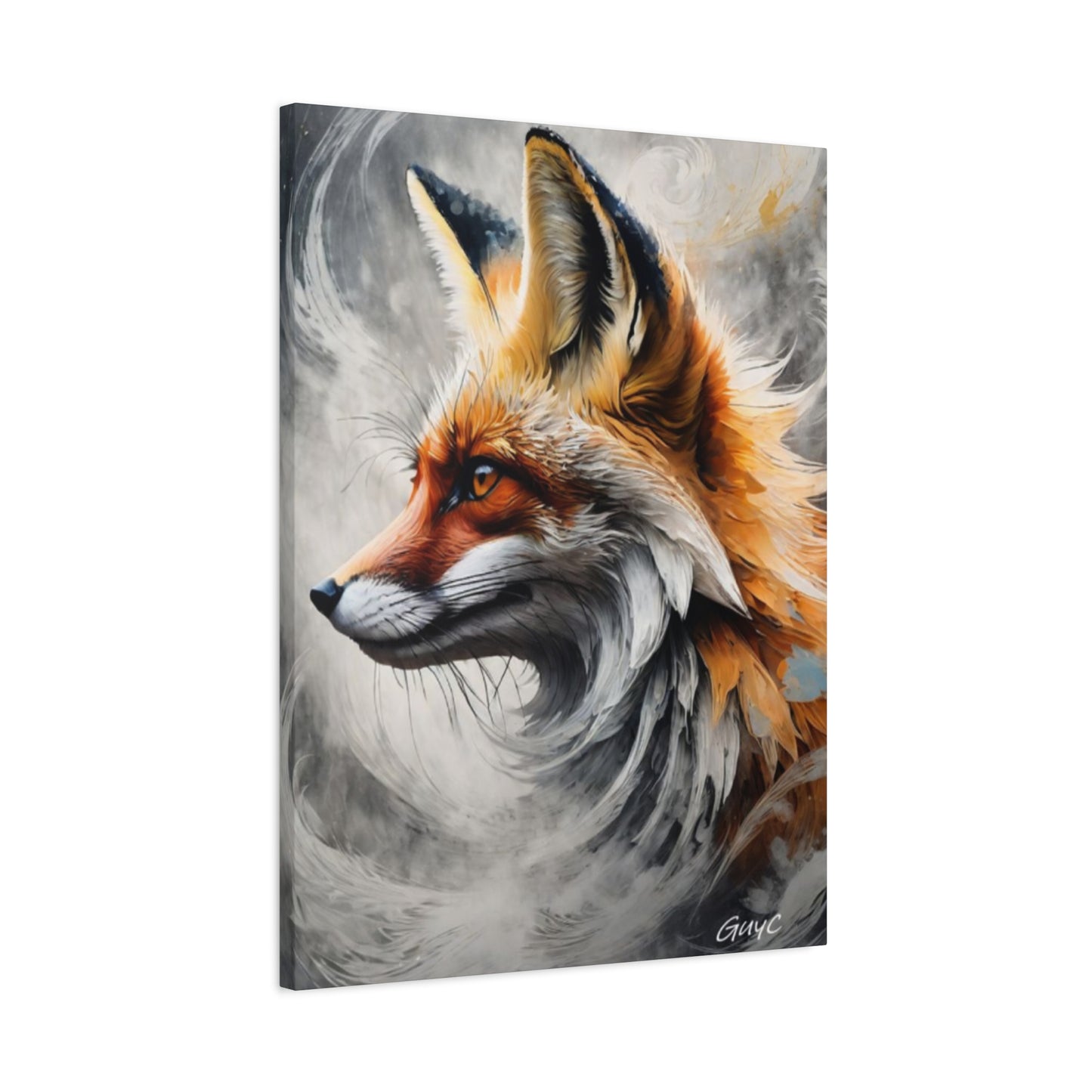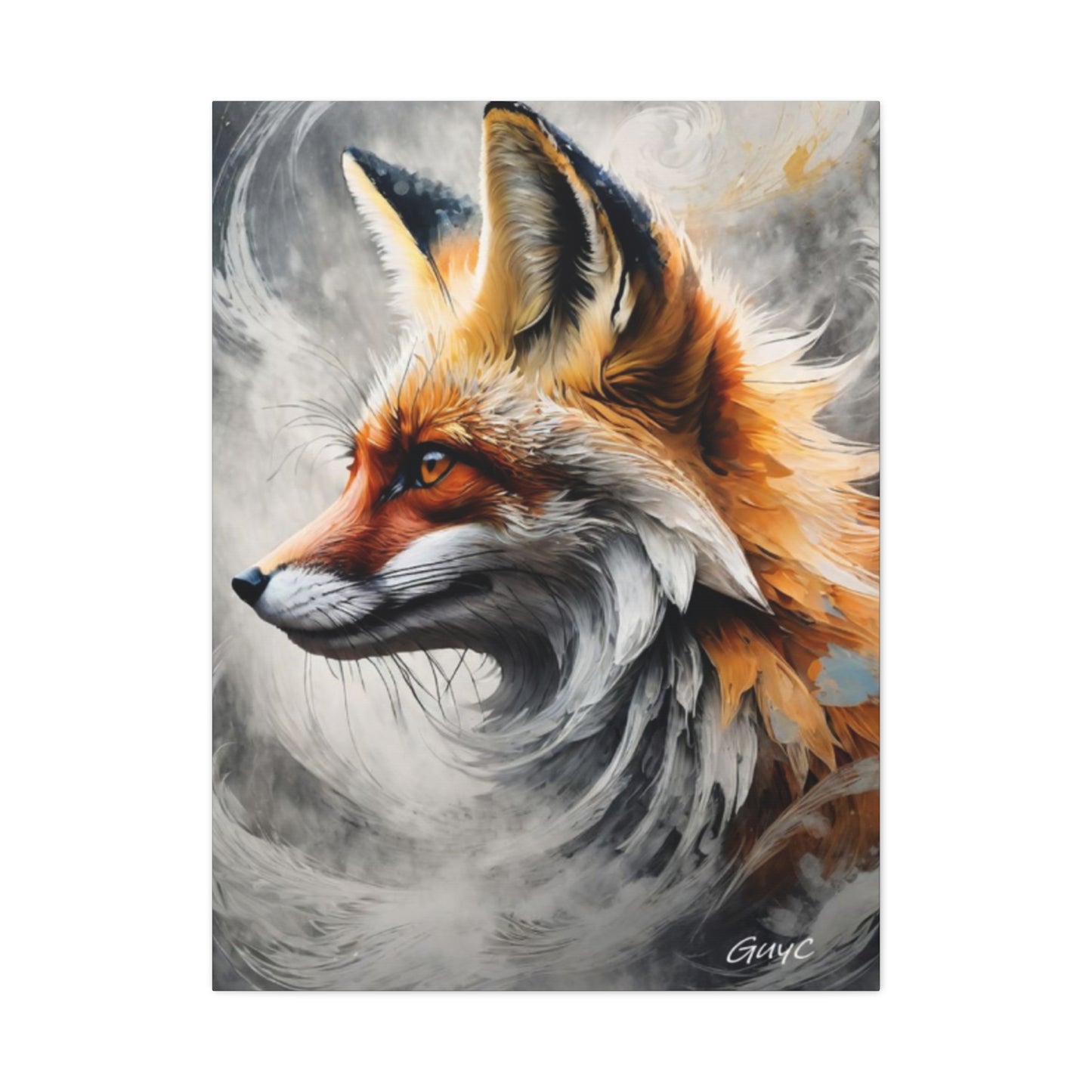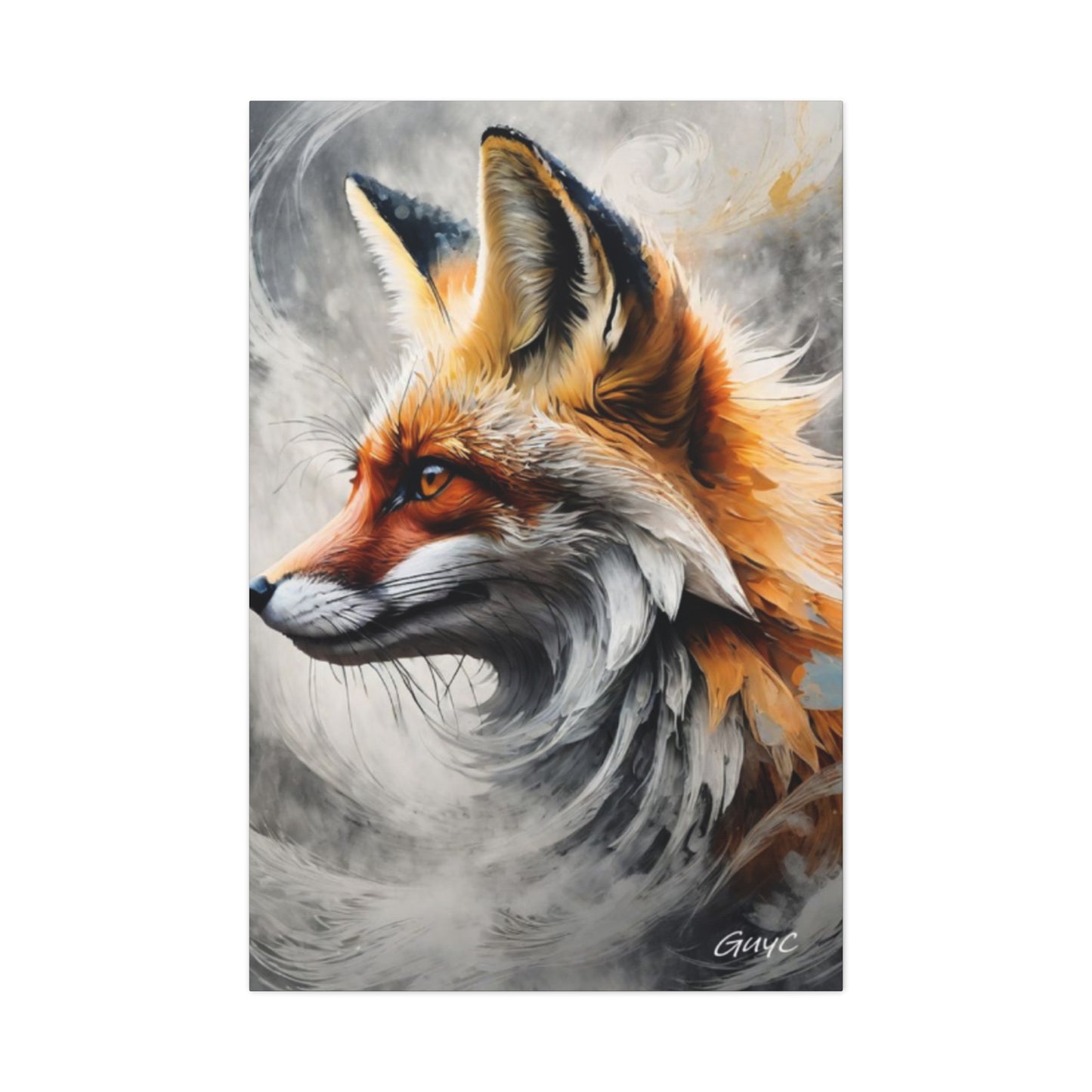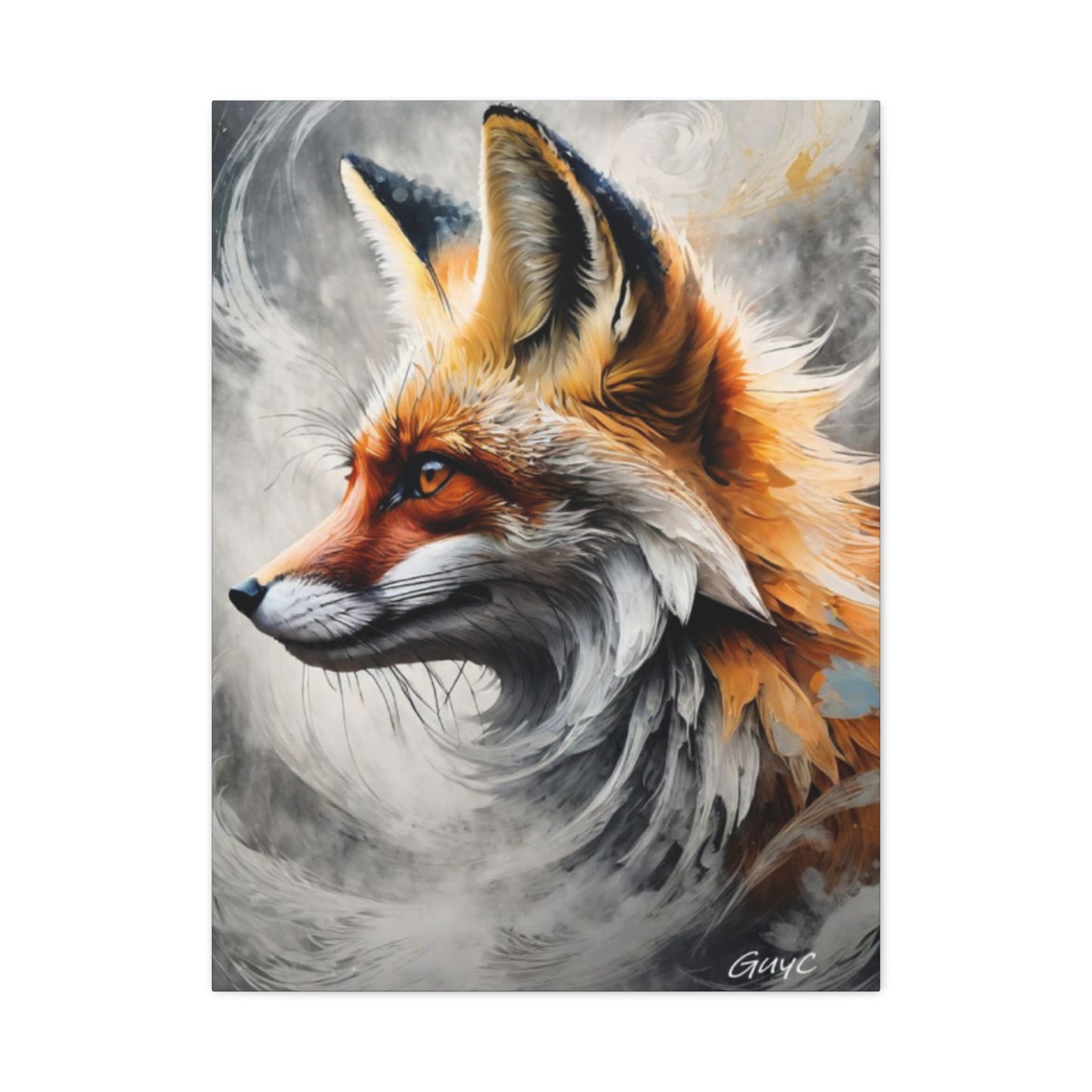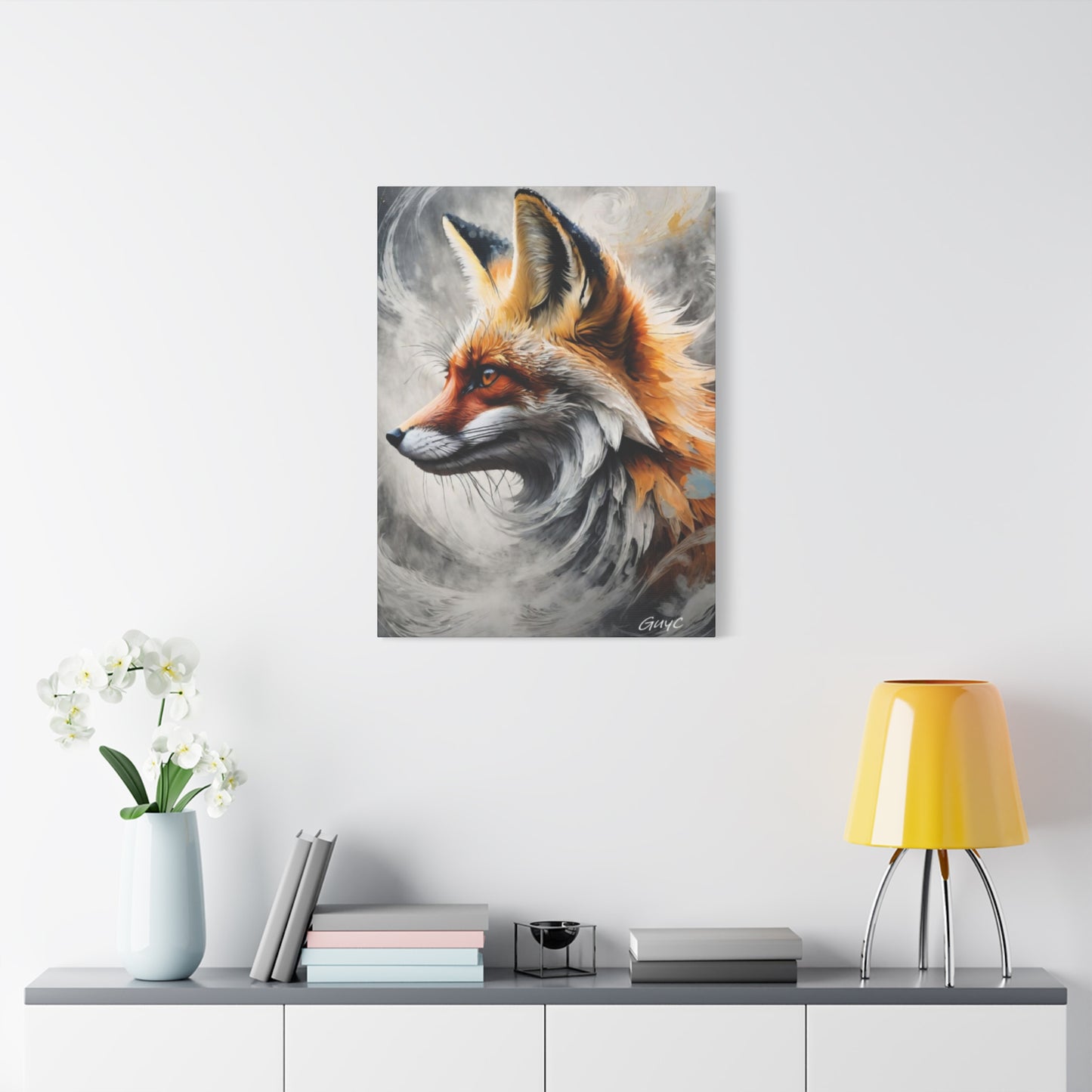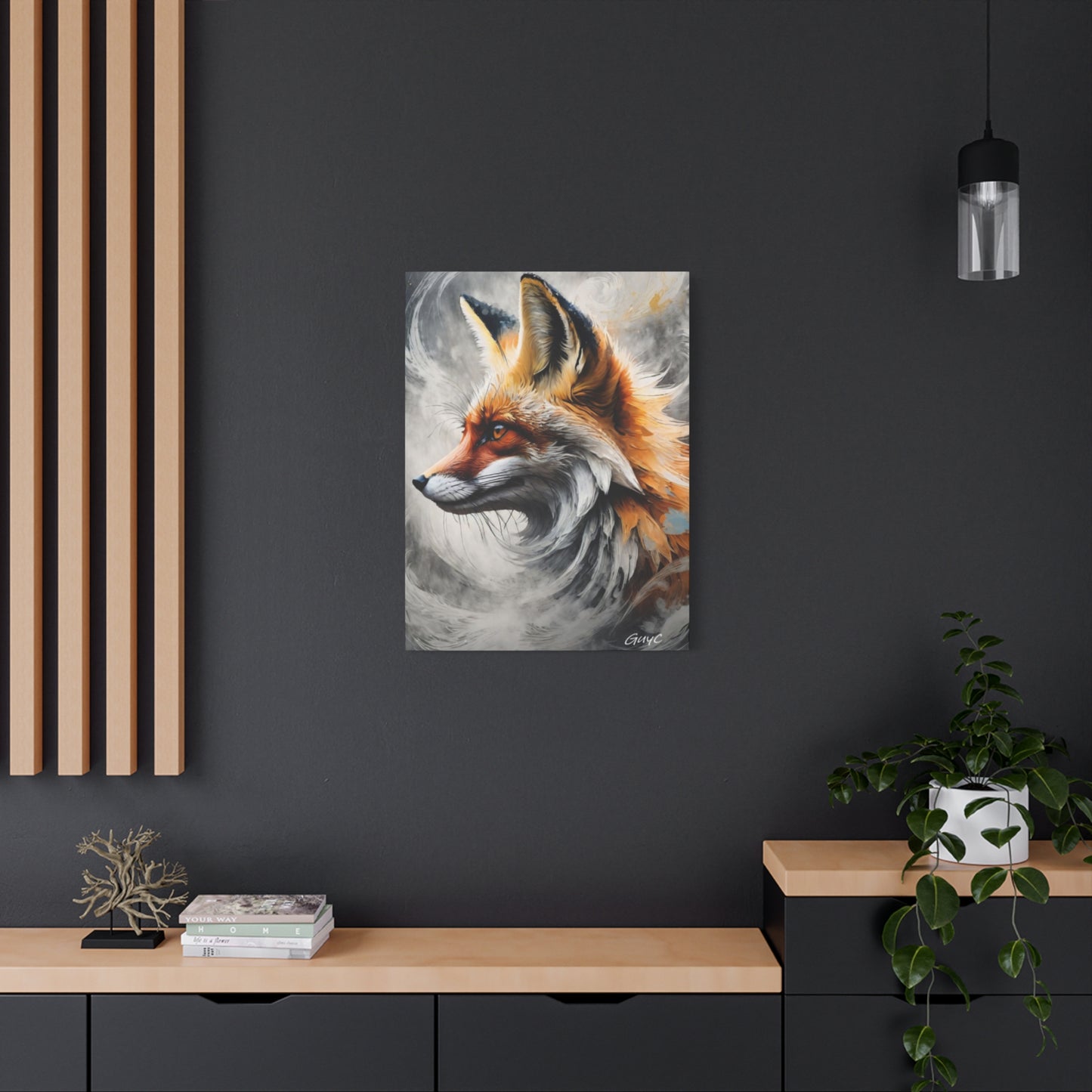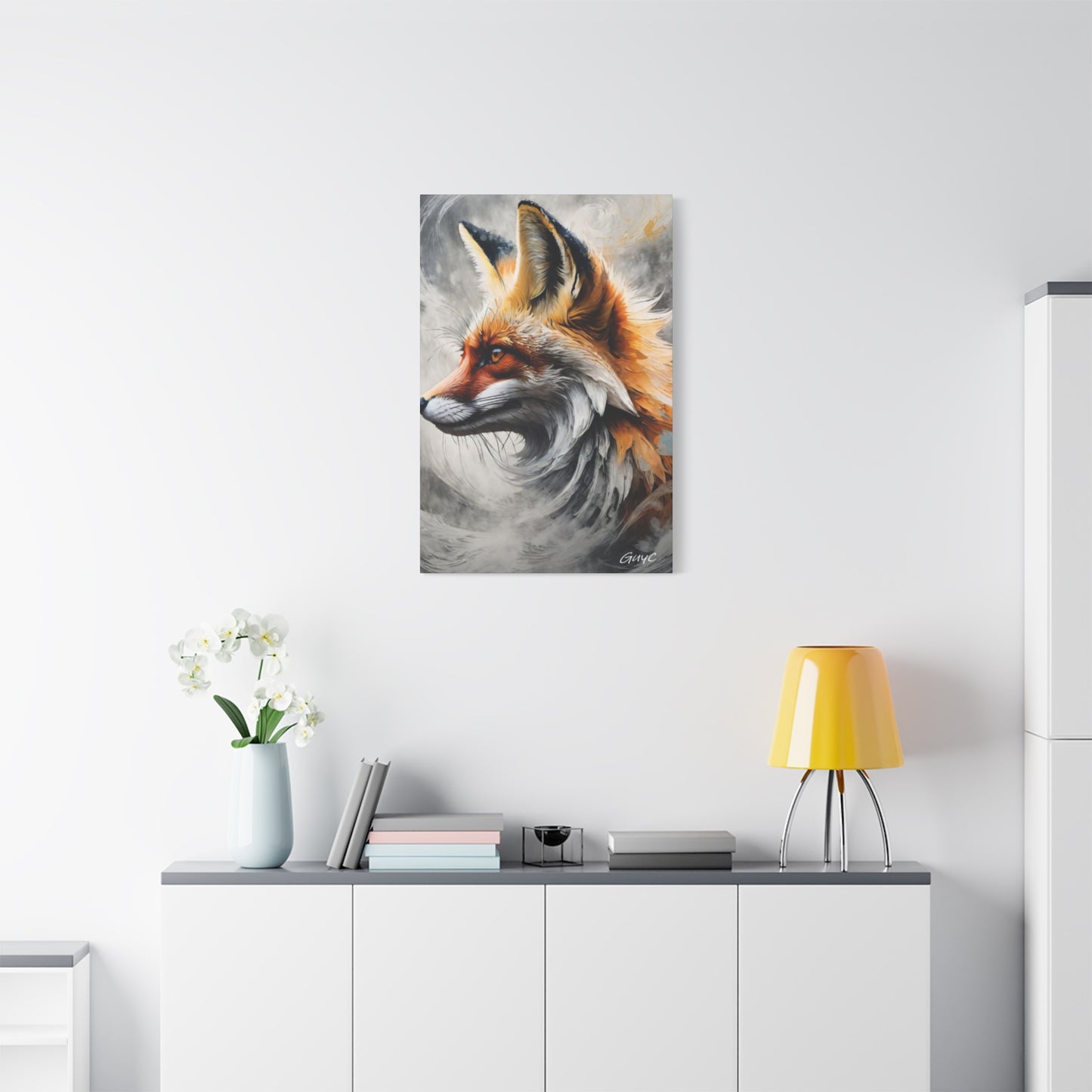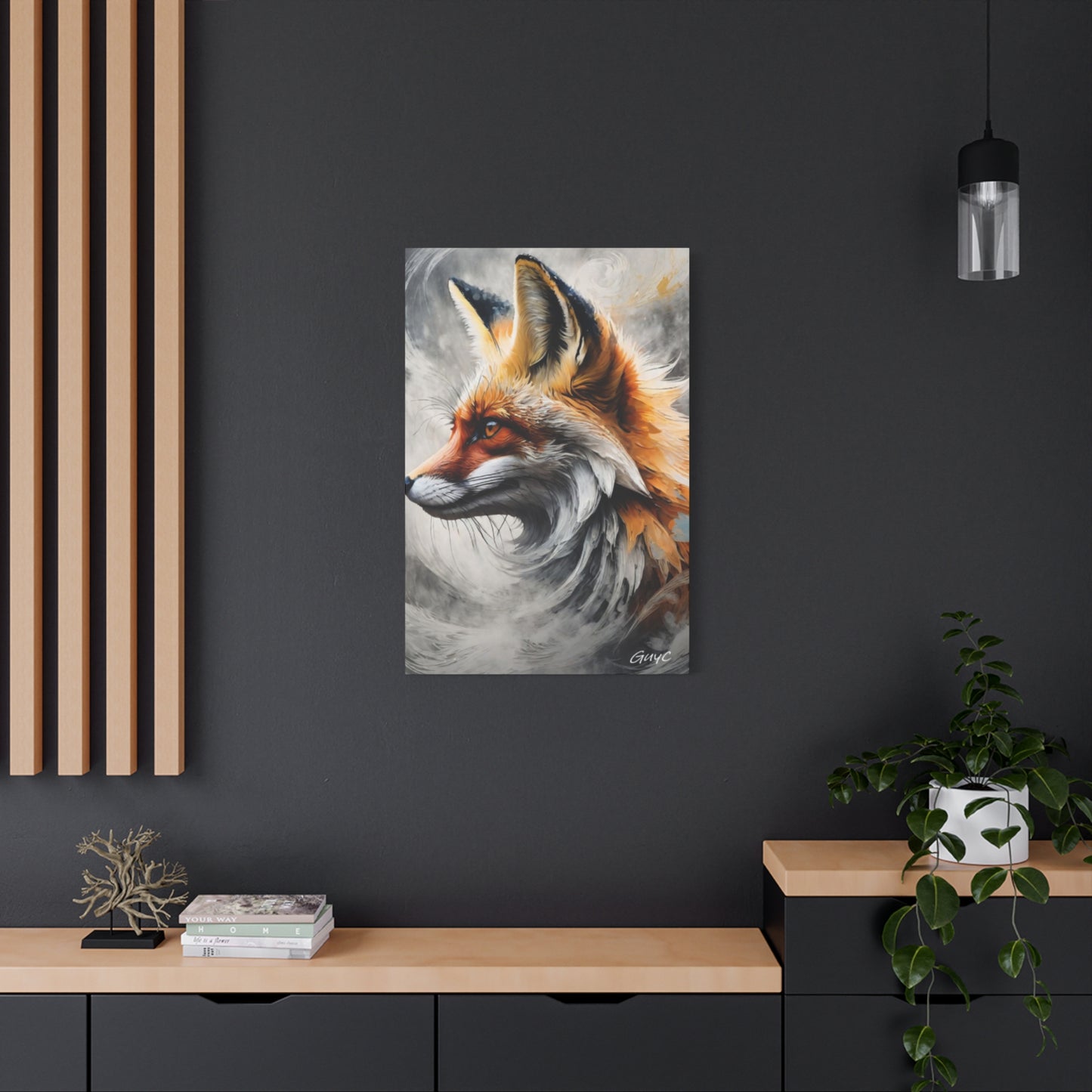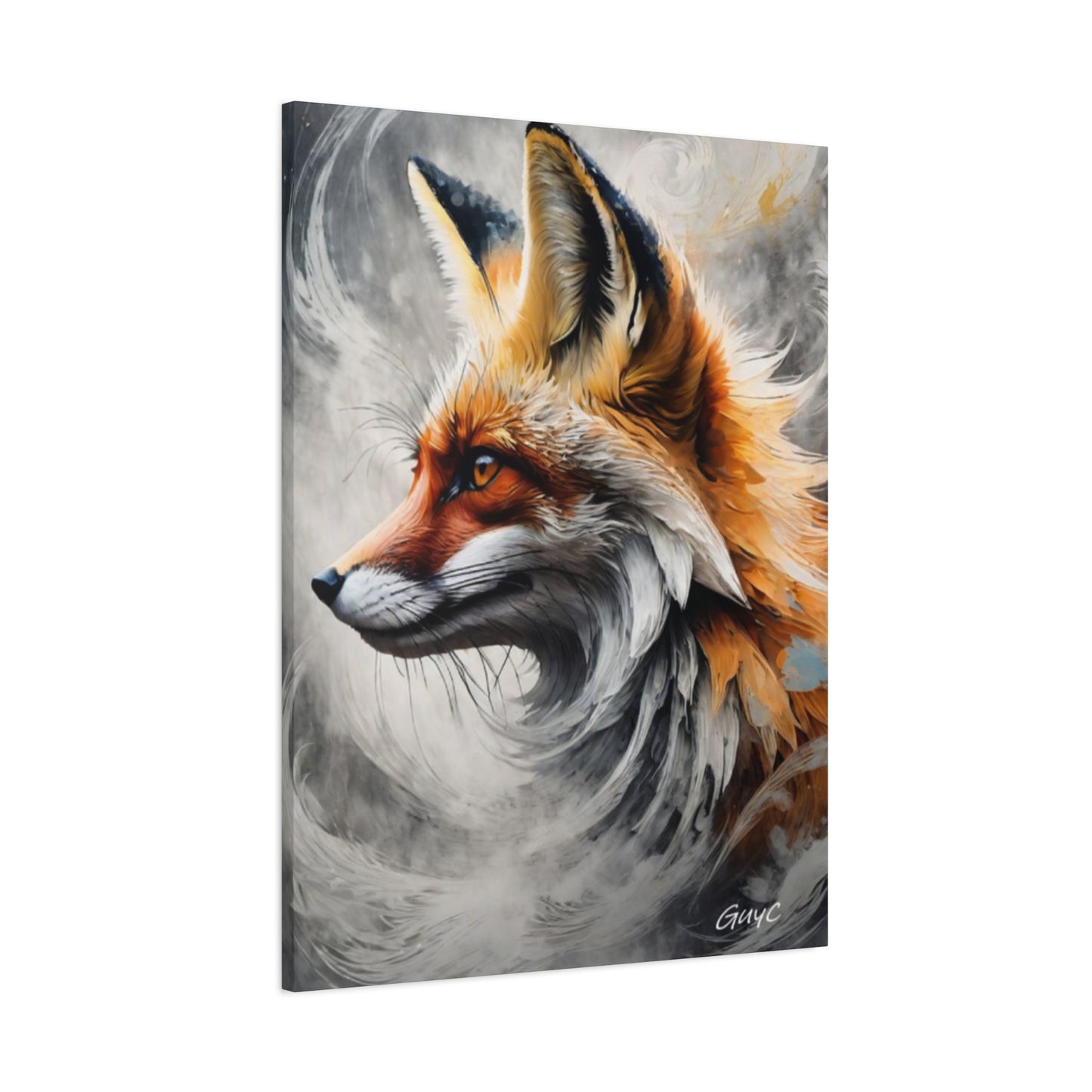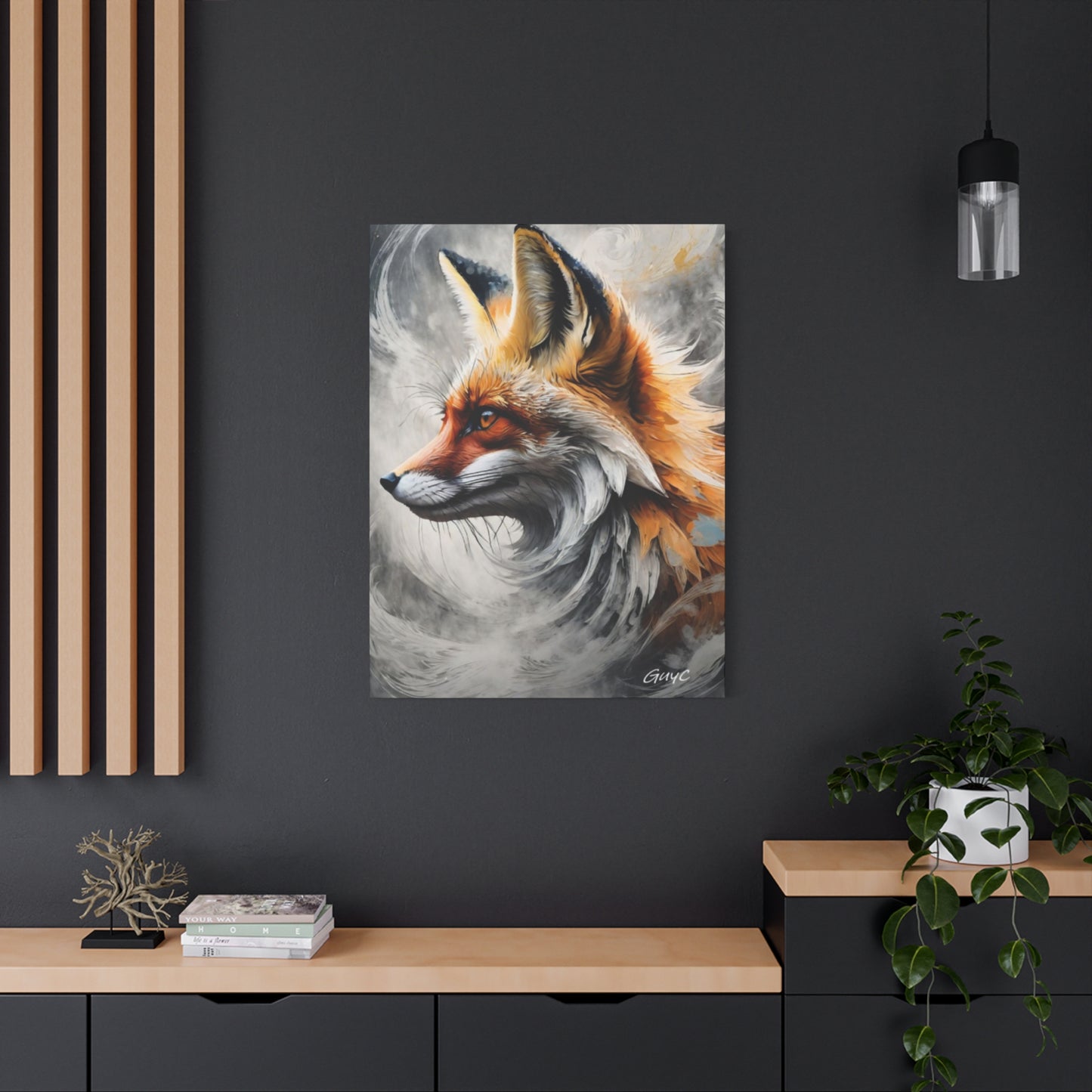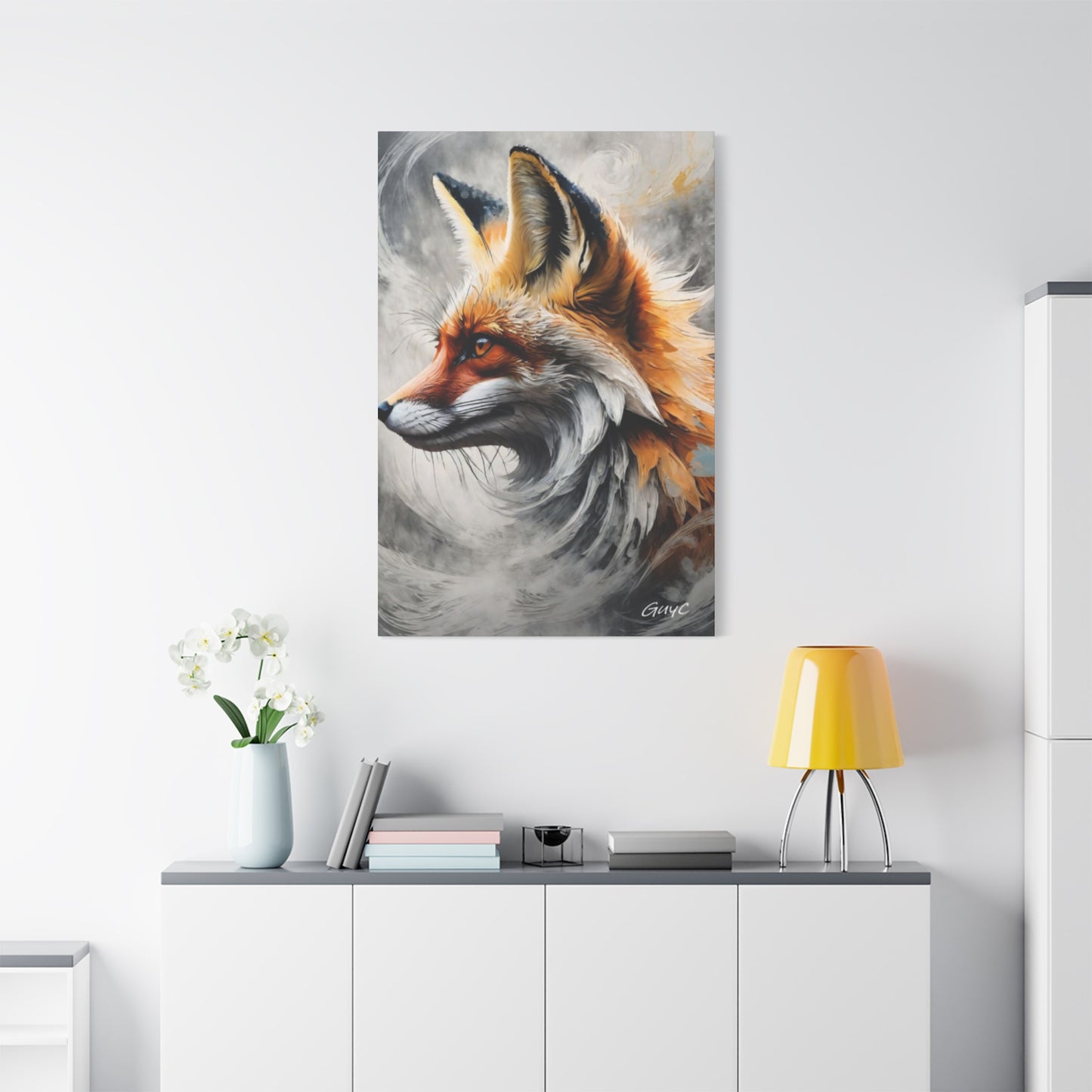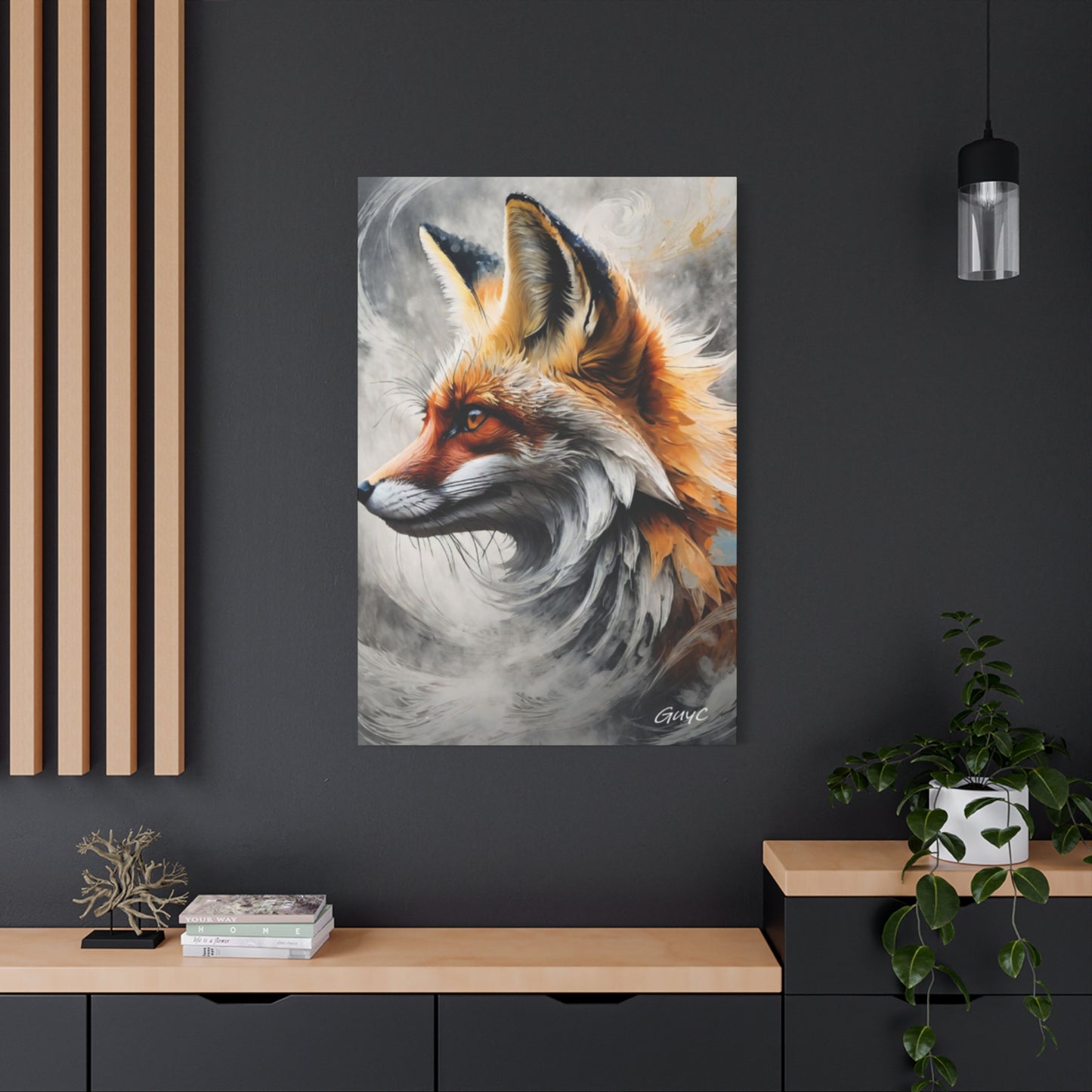Cunning Canvases: The Bold Energy of Red Abstract Fox Wall Art
The intersection of the wild and the domestic, the known and the mysterious, often finds its most potent expression in art. Within this realm, a particularly compelling subject has emerged, capturing the imagination of designers and art lovers alike: red abstract fox wall art. This is not merely a depiction of an animal; it is an exploration of essence. It is a fusion of primal energy, sophisticated creativity, and the enduring pull of nature, all condensed into a visual statement that can define a space. The choice of a fox is deliberate, tapping into a rich vein of global folklore that sees the creature as a symbol of cunning, adaptability, and otherworldly intelligence. When this potent symbolism is rendered in an abstract style, the literal form dissolves, giving way to an interpretation of the fox's spirit—its swift movement, its fiery coat, its silent tread.
The decision to emphasize the color red further amplifies this effect. Red is the color of lifeblood, of passion, of warning, and of warmth. It is a color that refuses to be ignored, drawing the eye and invigorating the spirit. In abstract art, red can represent the fox's vitality, its place in the autumn landscape, or the sheer intensity of its wild nature. This blend of a powerful subject, an evocative style, and a dominant color creates a piece of wall art that is more than mere decoration. It becomes a conversation starter, a focal point, and a source of dynamic energy within a room. This exploration delves into the multifaceted appeal of red abstract fox wall art, examining how this synthesis of color, creativity, and nature creates a bold and beautiful statement for any modern interior, offering a window into a world that is both feral and refined.
The Enduring Allure of the Fox Motif in Art
The fox has captivated the human imagination for millennia, prowling the edges of our settlements and the boundaries of our stories. This enduring allure makes the fox motif a powerful and recurring subject in art across all cultures and eras. Unlike predators valued purely for their strength, like the lion, or animals revered for their gentle nature, like the deer, the fox occupies a unique and ambiguous space. It is the trickster, the shapeshifter, the clever survivor. This symbolism is a goldmine for artists. A fox is not just an animal; it is an archetype of intelligence, wit, and adaptability. It represents the ability to thrive in changing environments, to outsmart challenges, and to move with fluid, unseen grace. In art, depicting a fox can be a shorthand for these complex ideas, imbuing a piece with a senseof narrative and mystery.
This creature serves as a bridge between the wild and the civilized. It is a wild animal, yet it is one of the few that successfully navigates human-dominated landscapes, often living in unseen parallel in our own cities and suburbs. This liminal status makes it a compelling symbol for the modern world, representing the wildness that persists even in the heart of civilization. Visually, the fox offers a dynamic form. Its sharp, intelligent face, its bushy tail, and its lithe, agile body are inherently aesthetic. The classic russet coat is a vibrant splash of color in its own right, a flash of fire against a green forest or a white snowbank. When this motif is taken up by an artist, especially in the form of red abstract fox wall art, it becomes a conduit for exploring this fascinating duality. The art is not just about a fox; it's about the ideas the fox represents: survival, cleverness, and the untamable spirit of nature.
Red as a Primal Statement in Creative Decor
Color is the most immediate and emotional language of interior design, and within that vocabulary, red is the most powerful and primal statement. It is a color of extremes, bypassing quiet contemplation and speaking directly to our core instincts. Red is the color of fire, of blood, of a setting sun, and of a blooming rose. It embodies a spectrum of intense emotions, from passionate love and vibrant energy to alertness and danger. When red is used as the dominant force in a piece of wall art, it fundamentally alters the atmosphere of a room. It cannot be a background element; it instantly demands attention, becoming the undeniable focal point of the space. This is why red abstract fox wall art carries such a bold impact. The artist is harnessing this primal power and focusing it through the lens of the fox motif.
In a design context, red injects a room with vitality and warmth. In a neutral, minimalist, or monochrome space, a splash of brilliant crimson or deep burgundy can prevent the decor from feeling sterile or cold. It introduces a pulse, a sense of life and dynamism. The abstract nature of the art allows this color to be the main subject. Instead of just coloring an object, the red is the object, representing the fox's energy, its speed, or its fiery spirit. Different shades of red can evoke different moods. A bright, true red is energizing and confident, perfect for a social space like a living room or entryway. A deeper, more muted rust or terracotta red can feel more grounded, earthy, and warm, connecting the artwork back to the natural tones of clay and autumn leaves, which pairs perfectly with the fox theme. Using red is a deliberate and confident choice, a declaration of a bold personality that is unafraid to embrace vibrancy and passion.
Deconstructing the Abstract: Beyond Literal Forms
The term "abstract" in art often signifies a departure from reality, a move away from depicting things as they appear to our eyes. When applied to a subject like the fox, this artistic style unlocks a deeper level of interpretation. A photorealistic painting of a fox shows you what a fox looks like. Red abstract fox wall art, in contrast, attempts to convey what a fox feels like. It is an art of essence, not of exactness. The artist deconstructs the literal form—the four legs, the pointy ears, the bushy tail—and instead focuses on foundational elements like movement, energy, and spirit. The artwork might be a chaotic yet elegant swirl of crimson and orange, capturing the blur of a fox darting through the undergrowth. It could be a series of sharp, geometric shapes in shades of red, evoking the creature's sharp intelligence and angular agility.
This departure from literal form does something crucial: it invites the viewer to participate in the creative process. Instead of simply recognizing an image, the viewer's mind is engaged, finding the "fox" within the lines, shapes, and colors. The piece becomes a shared experience between the artist and the observer. This interpretive freedom is what gives abstract art its enduring power and personal connection. One person might see a fox curled asleep, represented by a single, contained mass of deep red. Another might see the same piece as the explosive moment of a pounce. The "fox" becomes a personal discovery. In the context of wall art, this means the piece is less likely to become stale. It offers a new perspective with each glance, reflecting the viewer's own mood and thoughts back at them. It is a dynamic and breathing element in the room, not just a static image.
Breaking Design Rules with Bold Art Choices
Interior design is often discussed in a language of "rules"—a set of inherited guidelines that dictate balance, scale, and color palettes. These rules suggest we use neutral tones for large spaces, that art should be hung at a precise eye level, and that bold colors should be confined to small, manageable accents. These conventions aim to create spaces that are safe, harmonious, and universally pleasing. However, the most memorable and personal interiors are almost always born from breaking these very rules. Making a bold art choice, such as hanging a large-scale red abstract fox wall art canvas, is a deliberate and powerful act of design rebellion. It is a declaration that the space is not intended to be a quiet background, but an active, vibrant environment with a distinct point of view.
This kind of art piece shatters multiple conventions at once. First, it refuses to be a simple "accent." A fiery, expansive abstract canvas is not an accessory; it is the protagonist of the room. It commands attention and forces all other elements to react to it, rather than quietly complementing them. Second, it challenges the rule of emotional subtlety. The combination of the intense, primal red and the evocative, wild energy of the fox is anything but subdued. It injects a potent dose of passion and vitality into the space, a far cry from the serene passivity often prized in conventional design. This choice demonstrates a confidence in one's own taste, a willingness to prioritize personal expression over a bland, inoffensive consensus. The result is a home that feels less like a showroom and more like a biography, a space that is brimming with the personality of its inhabitant.
The Abstract Fox in a Maximalist Setting
Maximalism is a design philosophy of curated abundance, a "more is more" approach that celebrates a rich tapestry of color, pattern, texture, and objects. It is a deeply personal style that layers different eras, influences, and themes into a cohesive and opulent whole. Within this seemingly chaotic splendor, one might assume a single piece of art would be lost in the visual noise. However, the opposite is often true. A maximalist interior, to be successful, requires anchoring elements—strong, confident pieces that ground the composition and prevent it from dissolving into clutter. A large red abstract fox wall art piece is an ideal candidate for such an anchor. It serves as a "hero" piece, a central sun around which the other, smaller satellite objects and patterns can orbit.
In this context, the bold, dominant red of the artwork can function as a unifying thread. This primary red can be echoed in a velvet cushion, a detail in a Persian rug, or the spine of a book, creating a deliberate color story that weaves through the room's abundant layers. The abstract nature of the piece also plays a crucial role. In a room filled with intricate floral, geometric, or animal prints, the broad, non-literal shapes of the abstract fox provide a moment of visual variance. It introduces a different kind of pattern, one that is organic, fluid, and energetic, cutting through the repetition of more formal designs. The fox motif itself adds another layer of narrative, a touch of the wild and cunning that can playfully interact with other themes in the room. Far from being overwhelmed, the abstract fox in a maximalist setting becomes the charismatic heart of the composition, a bold statement that proves its power by leading the beautiful, complex chorus.
The Dialogue Between Art and Furniture
A room is never just a collection of independent objects; it is a complex and dynamic conversation. The most important dialogue within that space occurs between the art on the walls and the furniture on the floor. These two elements are locked in a constant visual interplay that defines the room's character, mood, and narrative. A piece of art does not simply hang above a sofa; it communicates with it, and that sofa, by its color, shape, and texture, answers back. When the artwork is as potent as red abstract fox wall art, it often delivers the opening line of this conversation. It makes a bold, energetic statement, setting the tone for the entire room. A sleek, low-profile black leather sofa might respond with minimalist contrast, its coolness and sharp lines amplifying the art's fiery, organic passion.
Conversely, a rustic, live-edge wooden console table might "agree" with the artwork, echoing its natural, untamed theme and creating a harmonious story of the wild. The furniture can also initiate the dialogue. Imagine a deep, saturated navy blue velvet armchair. It poses a question of cool, deep color. Hanging a red abstract fox canvas nearby provides a stunning, high-voltage answer. This chromatic tension, a dance between primary opposites, creates an electric, sophisticated energy. This dialogue can be one of harmony, where shapes and colors are echoed, or one of exciting contrast, where opposing elements make each other stronger. A geometric abstract fox might mirror the clean lines of mid-century modern furniture, while a fluid, expressive piece might soften an industrial, metal-heavy space. The success of an interior lies in this relationship—the furniture provides the function and form, but the art provides the soul and the story.
How Art Choice Reflects Personal Identity
The objects we choose to live with are the words we use to write our autobiography. Long after the paint colors have been chosen and the furniture arranged for function, our art choices remain the most potent, unfiltered expression of our personal identity. A home's art collection is a window into the inhabitant's mind, values, and passions. The decision to select a piece of red abstract fox wall art, specifically, is a remarkably articulate statement. It is a trifecta of personal signifiers, with each element—the subject, the style, and the color—revealing a distinct facet of a complex personality. At its core, the choice of the fox motif suggests a deep appreciation for intelligence, adaptability, and a touch of wildness. It resonates with a person who values cleverness over brute force, who perhaps sees themselves as an independent survivor, or who simply feels a strong connection to this enigmatic, liminal creature.
The preference for an abstract style speaks volumes. This individual is likely imaginative, intuitive, and comfortable with ambiguity. They are not looking for art to provide a simple, literal answer. Instead, they crave an experience that is interpretive and emotional. They value the essence and energy of a subject over a precise, photographic representation, revealing a mind that is open to suggestion and finds beauty in the unseen. Finally, the dominant choice of red is the most direct and fearless declaration. This is the color of passion, energy, and confidence. It signifies a personality that is not afraid to be seen, one that is bold, decisive, and desires a living space that feels vibrant and alive. To choose this specific art is to say, "I am intelligent, I am imaginative, and I am passionate." It is a powerful summary of a dynamic and fearless identity, worn proudly on the wall for all to see.
The Meditative Quality of Abstract Shapes
The word "abstract," especially when paired with a high-energy color like red, often evokes feelings of chaos, speed, and intensity. We associate the style with explosive emotion and dynamic movement, which is certainly one of its great strengths. However, abstract art also possesses a profound and often overlooked meditative quality. This capacity for inducing a state of calm contemplation stems from its very lack of literalism. A realistic painting commands the brain to engage in an act of recognition: "That is a fox. That is a tree. That is snow." This process is cognitive and defined. Abstract art, in contrast, liberates the viewer from this duty. It does not demand identification; it simply invites observation. This freedom from specific narrative allows the mind to shift from an analytical state to a more receptive, sensory one.
When gazing at a piece like a red abstract fox canvas, the mind is free to wander. The eye can trace the fluid path of a brushstroke, explore the subtle bleed of one shade of crimson into another, or rest in an open area of negative space. This act of "visual following," without a set destination or story to decipher, is a powerful form of mindfulness, much like watching a flame flicker or water flow. The mind is anchored in the present moment, engaged purely by the sensory experience of form and color. Even in a dynamic composition, the human brain will subconsciously seek patterns and balance, finding a moment of harmony where a sharp angle is softened by a curve. The artwork becomes a visual mantra, a beautiful and complex object upon which to rest one's attention. It's a space where the energy of the red is not just agitating, but can also be seen as warm, vital, and all-encompassing, like a focused breath.
The Fox as a Reminder of Nature's Resilience
In our modern, structured lives, we often crave a connection to the raw, untamed forces of the natural world. We hang landscapes to remember its beauty, but the fox motif offers something more specific and, perhaps, more relevant. The fox is not just a symbol of nature; it is a potent symbol of nature's resilience. This creature is the ultimate archetype of adaptability. It is not an animal that has retreated in the face of human expansion, requiring pristine, untouched wilderness to survive. On the contrary, the red fox has thrived by navigating the margins, by being clever, and by adapting to our new, human-centric landscapes. It survives in our suburbs, hunts in our greenbelts, and flourishes in the liminal spaces between our world and the wild one.
This is a powerful and very modern form of strength. It is not the overwhelming, brute-force power of a lion or a bear, but the tenacious, intelligent, and flexible power of a survivor. The fox embodies the ability to bend without breaking, to out-think a challenge, and to find opportunity in any environment. Bringing a piece of red abstract fox wall art into the home serves as a daily talisman of this very spirit. It is more than just a wildlife picture; it is an emblem of that tenacious life force. The abstract rendering, with its fiery, energetic reds, is a perfect visual metaphor for this passionate, unyielding will to live. When we face our own personal or professional challenges, the fox on the wall becomes a quiet, persistent reminder. It is an homage to nature's incredible, undaunted ability to find a way, encouraging us to be just as adaptable, just as clever, and just as resilient in our own lives.
Red Fox Abstract Art in Your Space
Incorporating red fox abstract art into your living environment requires thoughtful consideration of numerous factors that influence the overall aesthetic outcome. The process begins with understanding how these distinctive pieces interact with their surroundings, creating relationships between color, form, space, and light that ultimately determine the success of the installation. When approached strategically, red fox abstract art can fundamentally alter the character of a room, elevating ordinary spaces into extraordinary environments that reflect personal taste and design sophistication.
The first consideration when styling with red fox abstract art involves assessing the existing color palette of your space. Red, being a dominant and energetic hue, naturally commands attention and can significantly influence the perceived temperature and mood of a room. In spaces dominated by cool tones such as blues, grays, or whites, a red fox abstract piece introduces vital warmth and creates dynamic contrast that prevents the environment from feeling sterile or cold. The interplay between cool backgrounds and warm fox imagery generates visual tension that keeps the eye engaged, adding depth and interest to otherwise monochromatic schemes.
Conversely, in rooms where warm tones already predominate, red fox abstract art can serve to reinforce and amplify the existing warmth, creating a cohesive and enveloping atmosphere. However, this approach requires careful calibration to avoid overwhelming the senses with excessive warmth. The abstract nature of these pieces often incorporates secondary colors and neutral elements that provide necessary breathing room within the composition, preventing the artwork from blending indistinguishably into warm-toned walls or furnishings. Strategic placement becomes particularly crucial in these scenarios, positioning the artwork where lighting conditions and surrounding elements allow it to maintain its distinct presence.
Scale represents another critical factor in successfully styling with red fox abstract art. Oversized pieces make bold statements and work exceptionally well as primary focal points in spacious rooms such as living areas, dining rooms, or master bedrooms. These substantial artworks can anchor entire design schemes, with other decorative elements selected to complement and enhance the piece rather than compete with it. The commanding presence of a large red fox abstract painting draws the eye immediately upon entering a room, establishing hierarchy and flow within the space. This approach proves particularly effective in open-concept layouts where clear definition between functional zones becomes necessary.
Smaller red fox abstract pieces offer different opportunities for creative styling, allowing for gallery wall arrangements, clustered groupings, or placement in intimate spaces where they can be appreciated at closer range. Multiple smaller works can create narrative sequences or thematic explorations, with variations in abstraction level, color intensity, or compositional approach providing visual diversity while maintaining cohesive subject matter. This strategy works beautifully in hallways, stairwells, or smaller rooms where a single large piece might prove overwhelming. The accumulated impact of several related pieces can equal or exceed that of a single large work while offering greater flexibility for arrangement and future reconfiguration.
The relationship between red fox abstract art and surrounding furniture requires careful orchestration to achieve balanced, harmonious results. Furniture placement should acknowledge and respect the artwork, avoiding arrangements that obstruct viewing angles or create awkward spatial relationships. In living rooms, seating arrangements might orient toward the artwork, making it a natural focal point for conversation and contemplation. The height at which furniture pieces sit relative to the artwork influences viewing experience significantly, with standard recommendations suggesting that art center points align roughly with standing eye level, typically between fifty-seven and sixty inches from the floor, though this can be adjusted based on specific circumstances and viewing preferences.
Emotional Effects of Red in Fox Abstract Art
Red stands among the most psychologically potent colors in the human visual spectrum, triggering immediate and often profound responses that operate at both conscious and subconscious levels. When this powerful hue dominates abstract fox art, it creates pieces that do far more than simply decorate walls. These artworks become active participants in the emotional life of a space, influencing mood, energy levels, social dynamics, and even physical responses among those who inhabit or visit the environment. Understanding the psychological dimensions of red allows for more intentional selection and placement of fox abstract art, ensuring that chosen pieces support desired emotional and functional outcomes within specific spaces.
The color red has been scientifically demonstrated to increase heart rate, elevate blood pressure, and stimulate metabolic activity when viewed for extended periods. These physiological responses stem from deep evolutionary associations between red and critical survival information. Throughout human history, red has signaled danger through blood and fire, opportunity through ripe fruits and flowers, and social status through rare pigments and dyes. These ancient associations persist in modern psychology, making red inherently attention-grabbing and emotionally activating. In the context of abstract fox art, these effects can be harnessed to create spaces that feel energized, passionate, and alive, particularly suitable for areas where activity, conversation, and engagement are desired.
Red fox abstract art introduces not only the psychological impact of color but also the symbolic resonance of the fox itself, creating a compound effect that exceeds the sum of its parts. Foxes universally represent cleverness, adaptability, and independence across diverse cultural traditions. They navigate between wilderness and civilization, embodying both untamed nature and cunning intelligence. When these symbolic associations combine with the activating properties of red, the resulting artwork carries suggestions of passionate intelligence, creative energy, and confident individuality. These subtle psychological messages make red fox abstractions particularly appealing to creative professionals, entrepreneurs, and anyone seeking to cultivate an environment that encourages innovative thinking and bold action.
The intensity of red's psychological effect varies significantly based on saturation, shade, and proportion within the composition. Deep crimson reds convey sophistication, richness, and grounded passion, suitable for elegant spaces where warmth should feel luxurious rather than overwhelming. These darker reds pair beautifully with wood tones, leather, and other traditional materials, creating environments that feel established and confident. Bright scarlet and vermillion reds generate more immediate, visceral responses, perfect for spaces intended to energize and invigorate. These vibrant shades work exceptionally well in workout areas, creative studios, or social spaces where high energy and engagement are desired. Orange-tinged reds introduce cheerfulness and approachability, softening red's intensity while maintaining much of its warmth and vitality.
Optimal Presentation Methods for Red Fox Abstract Art
The manner in which red fox abstract art is presented fundamentally shapes how viewers experience and respond to the work. Display decisions extend far beyond simply hanging a piece on a wall, encompassing considerations of placement, height, lighting, context, and relationship to surrounding elements. Thoughtful presentation elevates artwork from mere decoration to meaningful focal points that enhance the overall quality and character of living spaces. Mastering the principles of art display allows homeowners and designers to maximize the visual impact and emotional resonance of red fox abstractions while creating cohesive, professionally finished environments.
Height represents one of the most critical yet frequently miscalculated aspects of art display. The standard recommendation to position artwork with its center point at approximately fifty-seven to sixty inches from the floor reflects average human eye level and creates comfortable viewing experiences for most people in most situations. However, this guideline requires thoughtful application rather than rigid adherence. In rooms where most viewing occurs while seated, such as dining rooms or television lounges, lowering artworks several inches ensures comfortable appreciation from typical viewing positions. Conversely, in hallways or spaces where people primarily stand and move, maintaining or even slightly exceeding standard height keeps the artwork at optimal eye level for passing viewers.
The relationship between artwork size and wall space profoundly influences visual balance and impact. General design principles suggest that artwork should occupy approximately two-thirds to three-quarters the width of the furniture piece it hangs above, creating proportional harmony between elements. A red fox abstract piece hung above a sofa, for example, should extend across roughly two-thirds of the sofa's width, anchoring the furniture grouping while leaving breathing room at the edges. This proportion prevents artwork from appearing lost and insignificant or, conversely, overwhelming and cramped. In situations where appropriately sized single pieces are unavailable or unaffordable, multiple smaller works can be arranged to create a combined visual mass that achieves the desired proportional relationship.
Grouping strategies for multiple red fox abstract pieces require consideration of both visual weight and thematic coherence. Gallery walls, when executed successfully, create curated collections that feel intentional and sophisticated rather than cluttered or chaotic. Several organizational approaches can guide these arrangements. Symmetrical grids establish order and formality, particularly appropriate for traditional or transitional spaces where structure and predictability are valued. Asymmetrical salon-style arrangements feel more dynamic and contemporary, allowing for varied piece sizes and more organic spatial relationships. Regardless of organizational approach, maintaining consistent spacing between pieces, typically two to three inches, creates visual unity and prevents arrangements from appearing random or accidental.
Color relationships within multi-piece displays deserve careful attention when working with red fox abstract art. Grouping pieces with similar color intensities and tonal qualities creates cohesive collections, while intentionally varying these qualities can generate dynamic, energetic displays. When combining red fox abstractions with other artwork types, consider how reds interact with other colors in the collection. Complementary colors, particularly greens and teals, create vibrant contrast that makes both colors appear more vivid. Analogous colors, such as oranges and yellows, produce harmonious, flowing transitions. Neutral companions allow red fox pieces to maintain dominance while providing visual rest areas that prevent overwhelm.
Cultural and Mythological Significance of Fox Imagery
The fox occupies a unique position in human mythology, folklore, and cultural symbolism across virtually all civilizations that have encountered these remarkable creatures. This rich symbolic heritage adds profound depth to red fox abstract art, transforming these pieces from simple animal representations into vessels for complex meanings, archetypal energies, and cross-cultural wisdom. Understanding the multilayered symbolism of the fox enhances appreciation for artworks featuring these animals while providing insight into why they resonate so deeply with contemporary audiences seeking meaningful connections with both nature and cultural tradition.
In East Asian traditions, particularly within Japanese and Chinese cultures, the fox holds especially prominent and complex symbolic status. Japanese folklore features the kitsune, supernatural fox spirits possessing intelligence, magical abilities, and often shapeshifting powers that increase with age and wisdom. These beings serve as messengers of Inari, the Shinto deity of rice, agriculture, and prosperity, establishing foxes as symbols of abundance, business success, and worldly advancement. The number of tails a kitsune possesses indicates its age and power, with nine-tailed foxes representing the pinnacle of wisdom and supernatural ability. This association with growth, development, and increasing capability makes fox imagery particularly resonant for those on journeys of personal or professional development.
Chinese mythology presents similar fox spirits called huli jing or jiuweihu, nine-tailed foxes possessing extraordinary powers and wisdom. These creatures appear throughout classical Chinese literature and legend, sometimes as benevolent guides, other times as tricksters or temptresses, reflecting the ambiguous moral nature often attributed to foxes across cultures. The consistent association with intelligence, cunning, and magical transformation establishes foxes as symbols of mental agility, strategic thinking, and the ability to navigate between different worlds or states of being. In contemporary contexts, these qualities translate to adaptability, quick thinking, and the capacity to thrive amid changing circumstances.
Korean folklore adds additional dimensions to Asian fox mythology through its gumiho, nine-tailed foxes that feature prominently in traditional stories and increasingly in modern media. These creatures embody both danger and allure, representing powerful feminine energy that exists outside conventional social boundaries. The gumiho's liminal nature, belonging fully neither to human society nor the wild, creates symbolic resonance around themes of otherness, independence, and refusal to conform to limiting expectations. For modern audiences, this symbolism often translates to celebrating individualism, embracing uniqueness, and rejecting constraining social conventions.
European folklore presents different but equally rich fox symbolism, typically emphasizing cleverness, cunning, and trickster qualities rather than supernatural powers. Aesop's fables, foundational texts of Western literary tradition, feature foxes prominently as clever protagonists who succeed through wit rather than strength. The famous fable of the fox and the grapes, source of the term sour grapes, presents the fox as a symbol of rationalization and face-saving after failure. Medieval European beast fables, particularly the Reynard cycle popular across the continent, elevated the fox to a central trickster figure whose cleverness allowed him to consistently outwit more powerful animals through guile and deception. These traditions established foxes as symbols of intelligence, resourcefulness, and the triumph of brains over brawn.
Framing Options and Presentation Techniques for Fox Abstract Art
The frame surrounding red fox abstract art functions as far more than practical support and protection. Framing choices fundamentally influence how artwork appears, interacts with its environment, and is perceived by viewers. The frame creates transition zones between artwork and surrounding space, establishes formal or casual tones, and either harmonizes with or deliberately contrasts against both the art itself and the broader interior design. Mastering framing principles allows for presentations that honor the artwork while supporting overall design objectives, creating cohesive visual experiences that feel intentional and sophisticated.
Traditional framing approaches emphasize craftsmanship, material quality, and respectful presentation that allows artwork to shine without interference. Classic wood frames in natural tones or subtle finishes create warm, traditional presentations suitable for a wide range of interior styles. Oak, walnut, cherry, and maple frames each bring distinctive grain patterns and color tones that can complement or contrast with the reds within fox abstractions. Darker wood frames, particularly those with visible grain, create rich, substantial presences appropriate for formal spaces or traditional decor. Lighter wood frames maintain warmth while feeling more casual and contemporary, working beautifully in Scandinavian-inspired or coastal interiors where bright, airy aesthetics predominate.
Ornate frames featuring decorative moldings, gilding, or carved details create more formal, traditional presentations that can either enhance or overwhelm artwork depending on relative visual weights. These elaborate frames work best with artwork substantial enough to hold its own against decorative competition, making them potentially suitable for larger red fox abstractions with bold compositional presence. The rich details of ornate frames create dialogue with the complexity of abstract compositions, each element enhancing rather than diminishing the other. However, these frames risk feeling dated or overly formal in contemporary minimalist settings where simplicity and restraint guide design decisions.
Modern and contemporary framing approaches typically embrace simplicity, clean lines, and minimal ornamentation. Simple wood frames with square profiles and minimal detailing create straightforward presentations that feel current without calling excessive attention to themselves. These frames serve their supportive role effectively while allowing artwork maximum visual impact. The restrained aesthetic of simple contemporary frames makes them extremely versatile, working across diverse interior styles from industrial lofts to mid-century modern homes to transitional spaces blending traditional and contemporary elements. The key to success with simple frames lies in selecting proportions and profiles that provide sufficient visual weight without appearing clunky or oversized.
Metal frames represent another contemporary option offering distinctive aesthetic qualities and practical benefits. Aluminum frames in natural silver, black, or gold finishes create sleek, minimal presentations perfectly suited to modern and industrial interiors. The thin profiles of metal frames maximize visible artwork area while providing structurally sound support even for large pieces. Metal's inherent coolness creates interesting contrast with the warmth of red fox imagery, generating visual tension that keeps presentations feeling dynamic and contemporary. Brass and copper frames introduce warmer metallic tones that harmonize with reds while maintaining modern, industrial character. These warmer metals have experienced renewed popularity recently, making them particularly current choices for trend-conscious spaces.
Incorporating Fox Abstract Art in Contemporary Room Designs
In the realm of modern interior design, the focus is on creating spaces that feel clean, serene, and uncluttered. The guiding principles of contemporary style—such as geometric simplicity, neutral color palettes, and functional priorities—encourage a restrained aesthetic. However, this doesn't mean that these spaces must be devoid of personality or warmth. One effective way to inject character into minimalist rooms is through the thoughtful incorporation of striking artwork, like red fox abstract art. When carefully selected and placed, fox-themed artwork can serve as a powerful focal point that enhances a space’s overall ambiance, offering a seamless balance between boldness and simplicity.
Red fox abstract art is particularly well-suited for contemporary interiors because it blends the natural world’s rich textures and colors with the conceptual, pared-down approach of modern design. The fox itself—symbolizing cunning, agility, and beauty in nature—provides an opportunity to bring in vibrant, warm tones without overwhelming the room’s carefully curated aesthetic. These works are often rich in color and form, yet abstract enough to maintain the minimalist feel. The combination of bright oranges, reds, and subtle earth tones against neutral backdrops allows for a piece that stands out while still feeling integrated into the overall design of the space.
In contemporary living rooms, where space is often defined by clean lines, neutral tones, and functional furniture, red fox abstract art can provide the necessary warmth and personality. The inherent contrast between the geometric precision of modern furniture—typically low-profile, angular, and upholstered in neutral colors like gray, beige, or white—and the dynamic, flowing nature of the fox can be visually stimulating without clashing. The fox's curves and organic forms add a sense of fluidity, breaking up the rigid structure of minimalist furniture and creating a balanced, inviting atmosphere.
One of the key aspects of incorporating bold abstract art into a contemporary room is understanding how it interacts with the space. While modern interiors prioritize simplicity, this doesn’t mean they lack emotion or expression. Red fox abstract art can bring energy and depth to otherwise muted rooms. For example, placing a large-scale piece above a sleek sofa in a living room can create an eye-catching focal point. Alternatively, smaller fox-inspired abstract works can be arranged in a grid or asymmetrically on a wall to offer visual interest without overpowering the space.
To ensure that the artwork complements the broader design rather than disrupts it, the choice of frame and the placement within the room are essential considerations. A minimalist frame, or even no frame at all, aligns with the contemporary aesthetic. In terms of placement, the artwork should feel integrated with the room’s flow. For instance, if the room has a central seating arrangement, the fox art piece should be positioned in such a way that it draws the eye while not dominating the space. This allows the art to work in harmony with the room’s layout and contribute to the overall mood.
The beauty of red fox abstract art in modern design lies in its versatility. It can adapt to various design styles, from more industrial or mid-century modern spaces to cozy, rustic-inspired interiors. Its natural subject matter provides an organic counterbalance to the minimalist, man-made elements that often define contemporary design, fostering a sense of connection to the outside world. In this way, it avoids the pitfall of appearing overly stylized or out of place, instead functioning as a seamless integration of nature, abstraction, and modern elegance.
Ultimately, the successful incorporation of red fox abstract art into contemporary room designs is all about balance. The boldness of the piece should enhance, not overpower, the room’s foundational elements. When chosen thoughtfully, these artworks don’t just add color or texture to a room; they bring personality and depth, making minimalist spaces feel more welcoming and grounded while maintaining the sophisticated restraint that defines modern design.
Conclusion
In conclusion, red abstract fox wall art exemplifies the powerful intersection of color, form, and symbolism, creating a bold visual statement that transforms any space it occupies. The choice of red as the dominant hue communicates energy, passion, and intensity, capturing the cunning and spirited essence of the fox. Unlike realistic portrayals, abstract representations allow for artistic freedom, emphasizing emotion and movement over literal accuracy. This approach invites viewers to interpret the fox not just as an animal, but as a dynamic symbol of cleverness, adaptability, and vitality.
The fox, long celebrated in various cultural narratives as a figure of wit and strategy, is brought to life in abstract form through sweeping lines, fragmented shapes, and vibrant red tones. This artistic choice magnifies the fox’s natural agility and intelligence, conveying an almost kinetic energy that seems to leap off the canvas. The abstraction challenges viewers to engage actively with the piece, deciphering the layers of meaning embedded within each brushstroke or geometric contour. In doing so, the artwork becomes more than decoration—it transforms into a dialogue between the artist and observer, where the fox’s spirit is interpreted through personal perception and emotional resonance.
Moreover, the use of bold red in abstract wall art plays a psychological role, eliciting feelings of excitement, urgency, and creativity. It commands attention and creates a focal point within any room, making the artwork not only visually striking but also emotionally stimulating. The fox’s cleverness and resilience are amplified by this choice of color, reminding viewers of the importance of adaptability and intuition in navigating the complexities of modern life. This combination of symbolism and aesthetic power is what gives red abstract fox wall art its unique appeal, bridging the gap between storytelling and contemporary design.
The artistry behind these canvases reflects a careful balance of spontaneity and intention. Every stroke, shape, and hue is carefully orchestrated to evoke motion, personality, and narrative energy. Abstract interpretations allow artists to explore the fox’s form in ways that traditional realism cannot, emphasizing emotional impact and imaginative expression. In essence, the artwork becomes a living entity, capable of inspiring creativity and contemplation long after it is first viewed.
Ultimately, red abstract fox wall art is more than a decorative piece; it is a celebration of energy, intelligence, and artistic boldness. By merging the fox’s natural cunning with vibrant abstraction, these canvases offer a visual and emotional experience that captures the imagination, energizes the environment, and invites a deeper reflection on the interplay of color, form, and symbolism. Such artwork stands as a testament to the transformative power of contemporary abstract art and its ability to infuse life and meaning into everyday spaces.

















